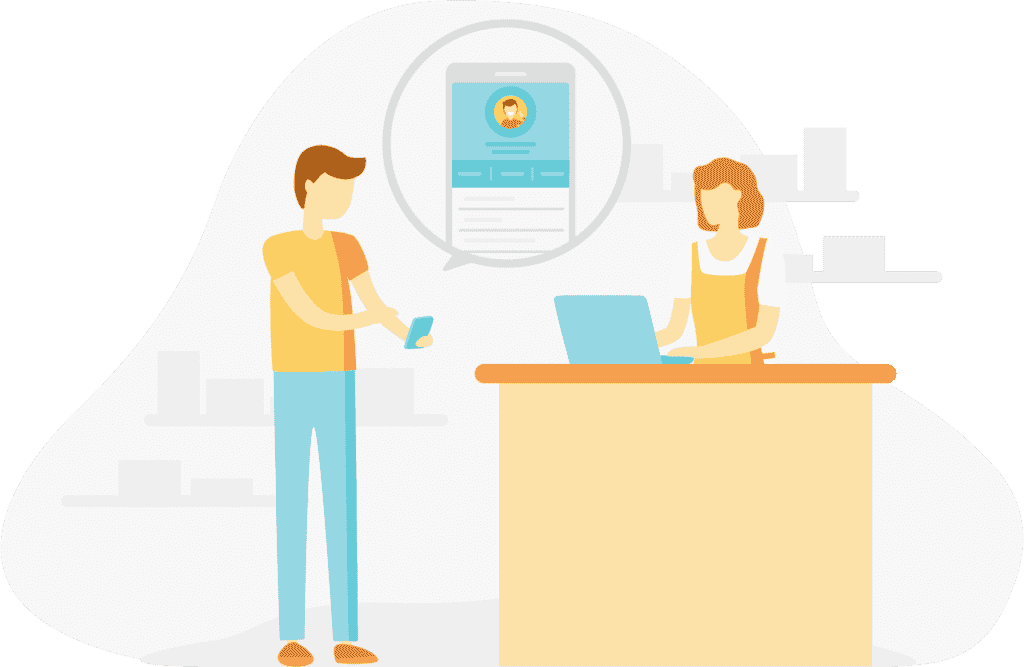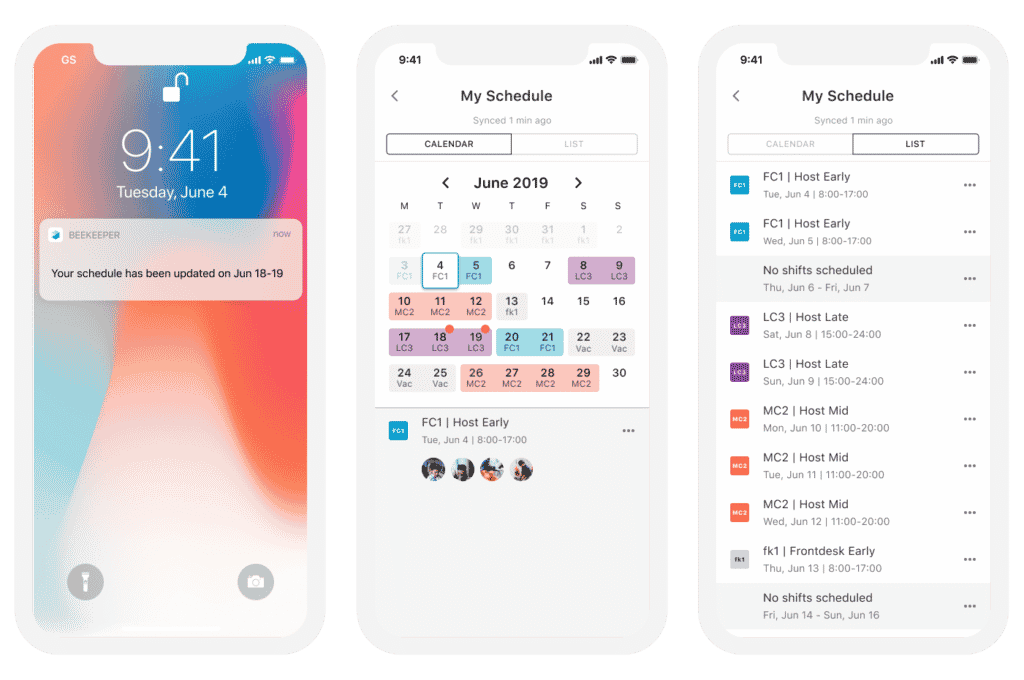Retail employees spend most of their time serving as mobile brand ambassadors—providing customer service, maintaining inventory, and selling products. But retail communication is often riddled with holes, leaving frontline workers out of the mix.
Discover the latest digital tools to help you support and engage your frontline workforce.
Retail workers are never in one place for too long. This makes face-to-face time between managers and their teams difficult to achieve. Traditionally, company news gets tacked up to break-room bulletin boards and largely forgotten. But companies can utilize mobile technology to engage their staff and improve internal retail communication.
Why a Retail Communication Strategy is Necessary
It’s 2020. You might think that most shopping is done online. But despite the rise of online consumer engagement, shopping is very much an integrated experience. People research products and prices online, but most people still prefer to shop in-store — even digitally savvy Millennials and the up-and-coming Generation Z.
In fact, 75% of consumers worldwide want to engage with a human during their shopping experience.
Building a knowledgeable workforce is essential if you have customer-facing teams. Retail workers have the ability to strengthen customer loyalty, attract new consumers, and boost sales. It’s crucial that they have in-depth knowledge about your products, services, and company.
Here are seven ways to optimize retail communication in your company.
1. Start Using an Internal Communication Platform
Your employees spend a lot of their free time on social networks like Facebook, Twitter, and Instagram, so it only makes sense to use a business messaging platform that allows your workers to engage with your company and each other in the same way.
Not only is a mobile platform an effective tool for employee engagement, but it also creates a communication network that will deliver business results.

Most retail staff time is spent interacting with customers, making it imperative that broader corporate initiatives and company strategies are being communicated properly. Store managers are often the sounding board for employees and the messenger of corporate updates.
However, with new communication platforms, retailers can bypass the middleman and allow employees to communicate globally within your company.
A mobile workforce app also:
- Creates a direct channel between frontline managers and their direct reports to make sure the mission is clear and everyone is on the same page.
- Creates a network for employees to give valuable first-hand insight that can help a company’s sales, like consumer trends.
- Has features designed for shift workers that allow retail associates to easily access their own personal information, like payroll, and manage their own schedules.

Pro tip: Your retail workers are your brand ambassadors. Empower them with information to provide superior customer service.
2. Establish a Bring Your Own Device (BYOD) Policy
More than three billion people worldwide use a smartphone. The best strategy for implementing a mobile communication strategy is to have a BYOD, or bring your own device, policy which has several benefits.
- A BYOD policy saves your company money by not having to provide the equipment to accompany your mobile software.
- When workers get to use their own devices that they are familiar and comfortable with, they’re more likely to adopt and engage with their workplace app.
- Workers only have to carry only one device.
With so many available options for smartphones, tablets, and laptops, it doesn’t make much sense to lock your retail employees into a specific device or operating system anymore. Almost all software and apps are compatible with Android and Apple operating systems. This gives you and your retail employees the freedom to communicate on the devices you’re most comfortable with.
Most importantly, when you use a mobile workforce app like Beekeeper, there are built-in security features. Beekeeper’s ISO 27001 certification, 256-bit TLS encryption, and advanced firewall protection means the platform is equipped with the highest security to protect against a data breach.
3. Empower Employees with Information
In retail, employees need to go out onto the sales floor fully equipped with the tools, resources, and information to provide great customer service.
Be transparent with your company’s goals, merchandise, and services, this helps the staff fully grasp your offerings when they’re interacting with consumers. It also allows them to quickly find answers to shopper’s questions on their mobile devices.
One strategy is to have an internal marketing plan specifically for your retail teams. With a mobile app, you can create a dedicated stream that will keep your associates informed about store updates and new products. For example, a sales associate is always most helpful when they know the inventory that’s in stock and how to get a product to a consumer to make a sale.
4. Facilitate Bottom-Up Retail Communication
Retail employees are a treasure trove of information. Some of the most valuable lessons and insights about the company can be found from sales staff on the floor. During staff meetings, encourage your retail employees to reveal any issues, new insights, or industry updates that would benefit both management and their coworkers.

You can do this through both in-person meetings or through direct messaging on your workplace app.
5. Use Face-to-Face Time to Complement your Digital Relationship
It’s not always possible or convenient to meet with retail employees face to face all at the same time. That’s where a digital workplace comes in handy. It can cover all of those in-between communication tidbits to retail workers. But schedule a weekly or monthly meetup to complement digital communication. Employees like human interaction as much as your customers!
Before a shift is the best time to get your employees’ attention. Encourage them to communicate with management during this time. Start using pre-shift huddles to help employees discuss top priorities, ask for help, and share news. There’s a palpable energy with in-person meetings that will resonate in your digital workspace, too.
6. Celebrate Employee Accomplishments
No matter how big or small, retailers can create a happy and productive work environment by sharing appreciation for their employees on a regular basis. Think of this as a digital employee-of-the-month club.
For example, UPS has a Twitter account that is exclusively used for employee recognition. This allows their employees all over the world to learn more about each other and create a sense of camaraderie among the ranks of their frontline workers.
Employee recognition delivers big returns, like higher engagement and productivity. In short, when they feel their hard work is recognized, employees will go above and beyond for the brand which always translates into a better customer experience.
See how Wireless Vision engaged their workforce and achieved a 95% adoption rate of Beekeeper.
7. Build an Autonomous Retail Workforce
While you want to align your team to your brand’s core values that they can represent when interacting with customers, you also want to empower workers to take charge of their job.
Why?
Autonomy promotes engagement. Workers rise to the occasion when given the reins to carve their path. An employee-first mobile app can both support this autonomy while ensuring they are still aligned to and guided by common values, objectives, and sales goals.
Download our Retail Survival Report to learn why digital enablement is a critical trend for retail.
Most Frequently Asked Questions
1. Start Using an Internal Communication Platform
2. Establish a Bring Your Own Device (BYOD) Policy
3. Empower Employees with Information
4. Facilitate Bottom-Up Retail Communication
5. Use Face-to-Face Time to Complement your Digital Relationship
6. Celebrate Employee Accomplishments
7. Build an Autonomous Retail Workforce




